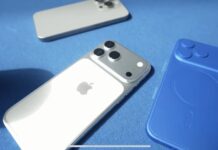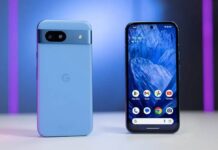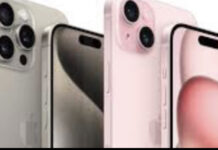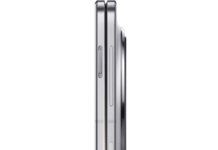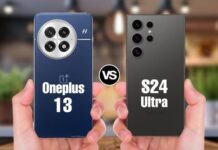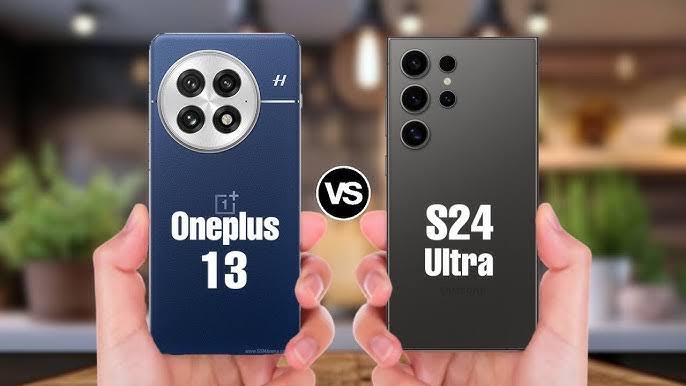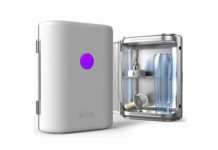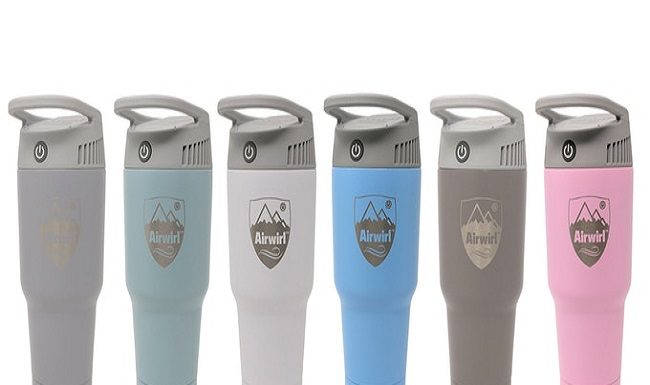The Samsung Galaxy S25 Ultra and the OnePlus 13 are two flagship smartphones that have garnered significant attention in the market. Both devices offer top-tier features, but they cater to different user preferences.
Here’s a comprehensive comparison to help you decide which phone aligns better with your needs.
Design and Build Quality
The Galaxy S25 Ultra maintains Samsung’s signature design with a 6.9-inch OLED display, featuring ultra-thin bezels and a sleek profile. It boasts a titanium frame, enhancing its durability and premium feel. The device also includes the S Pen, a staple for the Ultra series, offering added functionality for users who value stylus support.
On the other hand, the OnePlus 13 sports a slightly smaller 6.82-inch OLED display. It distinguishes itself with a vegan leather back, providing a unique tactile experience. The OnePlus 13 is also rated IP69 for water and dust resistance, offering superior protection compared to the S25 Ultra’s IP68 rating.
Display
Both smartphones feature LTPO OLED displays with a variable refresh rate of up to 120Hz, ensuring smooth visuals and efficient power consumption. The Galaxy S25 Ultra’s display is known for its brightness and color accuracy, making it ideal for media consumption and outdoor use. The OnePlus 13 also delivers impressive display performance, with high brightness levels and sharp visuals, catering to users who prioritize screen quality.
Performance
Under the hood, both devices are powered by Qualcomm’s Snapdragon 8 Elite chipset, built on a 3nm process. The Galaxy S25 Ultra’s version of the chipset is slightly overclocked, offering a marginal performance boost. In terms of memory, the OnePlus 13 comes out on top, going up to 16GB, whereas the S25 Ultra maxes out at 12GB of RAM.
Camera System
The Galaxy S25 Ultra is equipped with a versatile camera setup, including a 200MP main sensor, a 12MP ultra-wide lens, a 10MP 3x telephoto lens, and a 50MP 5x telephoto lens. This configuration allows for a wide range of photography options, from ultra-wide landscapes to detailed zoom shots.
The OnePlus 13 features a triple 50MP camera system, comprising a wide, ultra-wide, and 3x telephoto lens. While it may not match the zoom capabilities of the S25 Ultra, the OnePlus 13 delivers high-quality images with vibrant colors and good dynamic range. However, some users have noted that the OnePlus 13’s images can appear overprocessed compared to the more natural tones produced by the S25 Ultra.
Battery Life and Charging
The OnePlus 13 houses a 6,000mAh battery, offering impressive endurance that can last up to two days of moderate use. It supports 80W wired charging and 50W wireless charging, allowing for quick top-ups. In contrast, the Galaxy S25 Ultra comes with a 5,000mAh battery, supporting 45W wired and 15W wireless charging. While its battery life is commendable, it doesn’t quite match the longevity or fast charging capabilities of the OnePlus 13.
Software Experience
Samsung’s Galaxy S25 Ultra runs on One UI, offering a feature-rich experience with extensive customization options. The inclusion of the S Pen adds to its productivity features, appealing to users who utilize their device for note-taking or drawing.
The OnePlus 13 operates on OxygenOS, known for its clean and near-stock Android experience. It provides a smooth and intuitive interface, with a focus on speed and efficiency. Users who prefer a minimalist approach may find OxygenOS more appealing.
Price Point
The OnePlus 13 is priced more competitively, making it an attractive option for users seeking flagship features without a premium price tag. The Galaxy S25 Ultra, while offering a more extensive feature set, comes at a higher cost. Potential buyers should consider whether the additional features justify the price difference based on their individual needs.
Conclusion
Both the Samsung Galaxy S25 Ultra and the OnePlus 13 are exceptional smartphones, each with its strengths. The S25 Ultra excels in camera versatility, display quality, and productivity features like the S Pen. The OnePlus 13 stands out with its superior battery life, fast charging, and unique design elements. Your choice should align with your priorities, whether they lean towards camera performance and productivity or battery endurance and design aesthetics.
For a more in-depth comparison, this video might be handy
